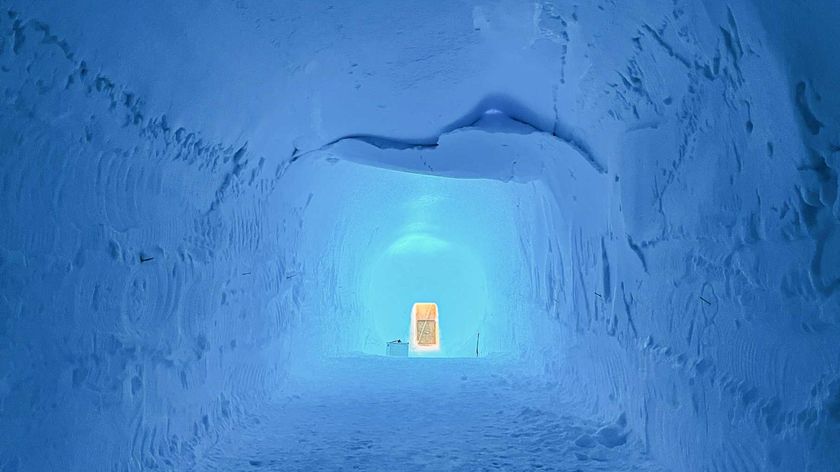The Riddle of Twin Telepathy

Twins, both fraternal and identical, have fascinated the world for millennia. They are often very close, and share not only genes but home environments, friends, clothes and, of course, secrets. However many identical twins — perhaps as many as one in five — also claim to share something more mysterious: a special psychic connection.
About one out of every 30 babies born in the United States is a twin, and identical twins are especially interesting because they have the same genes and are alike in many ways. Brothers and sisters can be close, but some twins claim to know what the other is thinking or feeling. It's an intriguing idea, but what's the truth behind it — coincidence, psychic powers, or something else?
Twins often finish each other's sentences and think the same thoughts, but that has more to do with shared experiences than any psychic telepathy. This sort of psychological connection isn't necessarily mysterious: any two people who know each other very well and who have shared many common experiences — including non-twin siblings, old married couples, and even best friends — may complete each other's sentences and laugh at inside jokes that leave outsiders baffled.
Separated at birth
The idea of twin telepathy has been around for well over a century. The 1844 Alexandre Dumas novella, "The Corsican Brothers," tells the story of two once-conjoined brothers who were separated at birth yet even as adults continue to share not only thoughts but physical sensations. As one twin describes, "However far apart we are now we still have one and the same body, so that whatever impression, physical or mental, one of us perceives has its after-effects on the other."
Dumas drew upon a considerable body of folklore associated with twins — not all of it positive. In many places if a cow gives birth to twin calves, they are sold immediately, as they are considered a bad omen. Centuries ago in West Africa — where women bear twins at a rate four times higher than the rest of the world — among the Yoruba people of Nigeria the arrival of twins was cause for alarm. Sometimes the mother and babies were banished from their village or even put to death, though modern-day twins are revered.
In their book "The Encyclopedia of Superstitions," (Metro Books 1961) folklorists E. and M.A. Radford note that "It is a very common belief that twins, especially identical twins, are united by a strong bond of sympathy that each knows when danger or misfortune threatens the other, even when they are separated. In the same mysterious way, any special state of happiness or wellbeing in one of the pair is reflected in the feelings of the other. It is often said that if one twin dies, the other will not live long thereafter."
Indeed, when twins die at the same time it can give the appearance of some sort of supernatural or psychic connection linking not only their mental states but physical health. For example in 2017, 97-year-old twin sisters Martha Williams and Jean Haley died outside their Rhode Island home after they both appeared to have tripped and fallen in the cold, dying from exposure. Three years earlier in 2014 identical twins Helen Mae Cook and Clara Mae Mitchel, aged 83, died within a day of each other (though the circumstances were different: one died suddenly of a heart attack and the other after a long struggle with Alzheimer's disease).
As remarkable as these stories are, they are the notable exceptions. After all, they make the news and become noticed precisely because of their rarity and extraordinary coincidence. The deaths of twins who die months, years, or decades apart are much more common and generally not newsworthy.
Of course given their advanced ages their coincident deaths are inherently more likely; it's far more common to hear of 83-year-old twins dying at the same time than, for example, 23-year-old twins. That identical twins might die at approximately the same stage of life at higher rates than non-twins is to be expected since genetics plays a role in many life-threatening illnesses including heart disease. Another non-psychic explanation for the timing of twin deaths is stress; the death of a close family member is one of the most stressful events in a person's life, and the shock and stress of losing such an intimate sibling could trigger a potentially fatal heart attack in the remaining twin.
Anecdotal evidence
Most of the evidence for twin telepathy is not scientific but instead anecdotal. For example, in 2009 a British teenager named Gemma Houghton was in her home when she suddenly had a feeling that her fraternal twin sister, Leanne, needed help. "I just got this feeling to check on her, so I went up to the bathroom and she was under the water," she said. Gemma found Leanne in a bathtub, unconscious. She had suffered a seizure and slipped under the water, nearly drowning. Gemma called for help and administered first aid, saving her sister's life. The story of Gemma and Leanne Houghton has been widely cited as an example of twin telepathy (the phrases "telepathic bond" and "sixth sense" appear in many news stories about them), and was cited by Guy Lyon Playfair, author of a book about twins, as a case where twin telepathy may have saved a life.
However, the case may not be as inexplicable as it first appears. Leanne had suffered many similar fits in the past, and the rest of her family (including her sister) had been warned to keep a watchful eye on her. Knowing that Leanne had a tendency to have seizures that could render her unconscious — and knowing that being alone in water (such as a bathtub or pool) could be dangerous for her — it's not surprising that Gemma might have become concerned when after a few minutes she heard no activity (such as splashing water) from the upstairs bathroom where Leanne was bathing alone. No "twin telepathy" is needed to explain this event; it's likely that any other (non-twin) member of the family who was home at the time would have reacted the same way.
Such stories of twin telepathy (or coincidences) that make the news and are discussed in the context of some unexplained phenomena are, of course, the most dramatic ones. Mundane coincidences that everyone experiences aren't newsworthy, and if Leanne's mother (and not her twin sister) had saved her it's unlikely we would have heard about it. By one estimate there are about 100 million twins worldwide, and the fact is that most twins do not report experiencing any sort of mysterious telepathic connection. If some special, psychic connection between twins is as strong and common as often claimed, then by chance alone we should expect millions of these amazing stories, not just a few dozen. As intriguing as the idea is, there is no credible scientific evidence that psychic powers exist, either in the general population or among twins specifically.
Benjamin Radford, M.Ed., is deputy editor of Skeptical Inquirer science magazine and author of seven books including "Scientific Paranormal Investigation: How to Solve Unexplained Mysteries" and "Mysterious New Mexico: Miracles, Magic, and Monsters in the Land of Enchantment," which will be published later this year.
Sign up for the Live Science daily newsletter now
Get the world’s most fascinating discoveries delivered straight to your inbox.



